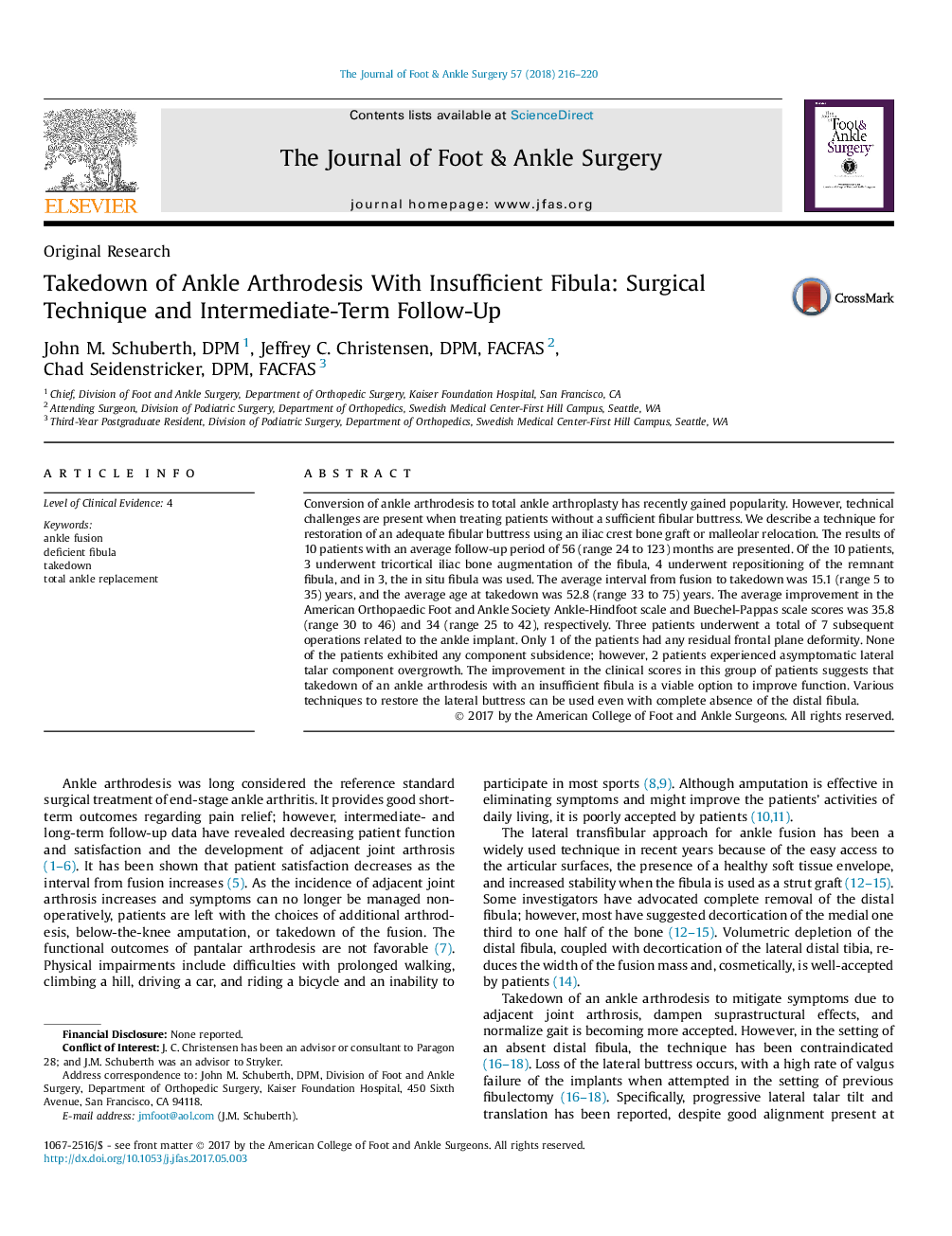| Article ID | Journal | Published Year | Pages | File Type |
|---|---|---|---|---|
| 8603152 | The Journal of Foot and Ankle Surgery | 2018 | 5 Pages |
Abstract
Conversion of ankle arthrodesis to total ankle arthroplasty has recently gained popularity. However, technical challenges are present when treating patients without a sufficient fibular buttress. We describe a technique for restoration of an adequate fibular buttress using an iliac crest bone graft or malleolar relocation. The results of 10 patients with an average follow-up period of 56 (range 24 to 123) months are presented. Of the 10 patients, 3 underwent tricortical iliac bone augmentation of the fibula, 4 underwent repositioning of the remnant fibula, and in 3, the in situ fibula was used. The average interval from fusion to takedown was 15.1 (range 5 to 35) years, and the average age at takedown was 52.8 (range 33 to 75) years. The average improvement in the American Orthopaedic Foot and Ankle Society Ankle-Hindfoot scale and Buechel-Pappas scale scores was 35.8 (range 30 to 46) and 34 (range 25 to 42), respectively. Three patients underwent a total of 7 subsequent operations related to the ankle implant. Only 1 of the patients had any residual frontal plane deformity. None of the patients exhibited any component subsidence; however, 2 patients experienced asymptomatic lateral talar component overgrowth. The improvement in the clinical scores in this group of patients suggests that takedown of an ankle arthrodesis with an insufficient fibula is a viable option to improve function. Various techniques to restore the lateral buttress can be used even with complete absence of the distal fibula.
Keywords
Related Topics
Health Sciences
Medicine and Dentistry
Orthopedics, Sports Medicine and Rehabilitation
Authors
John M. DPM, Jeffrey C. DPM, FACFAS, Chad DPM, FACFAS,
